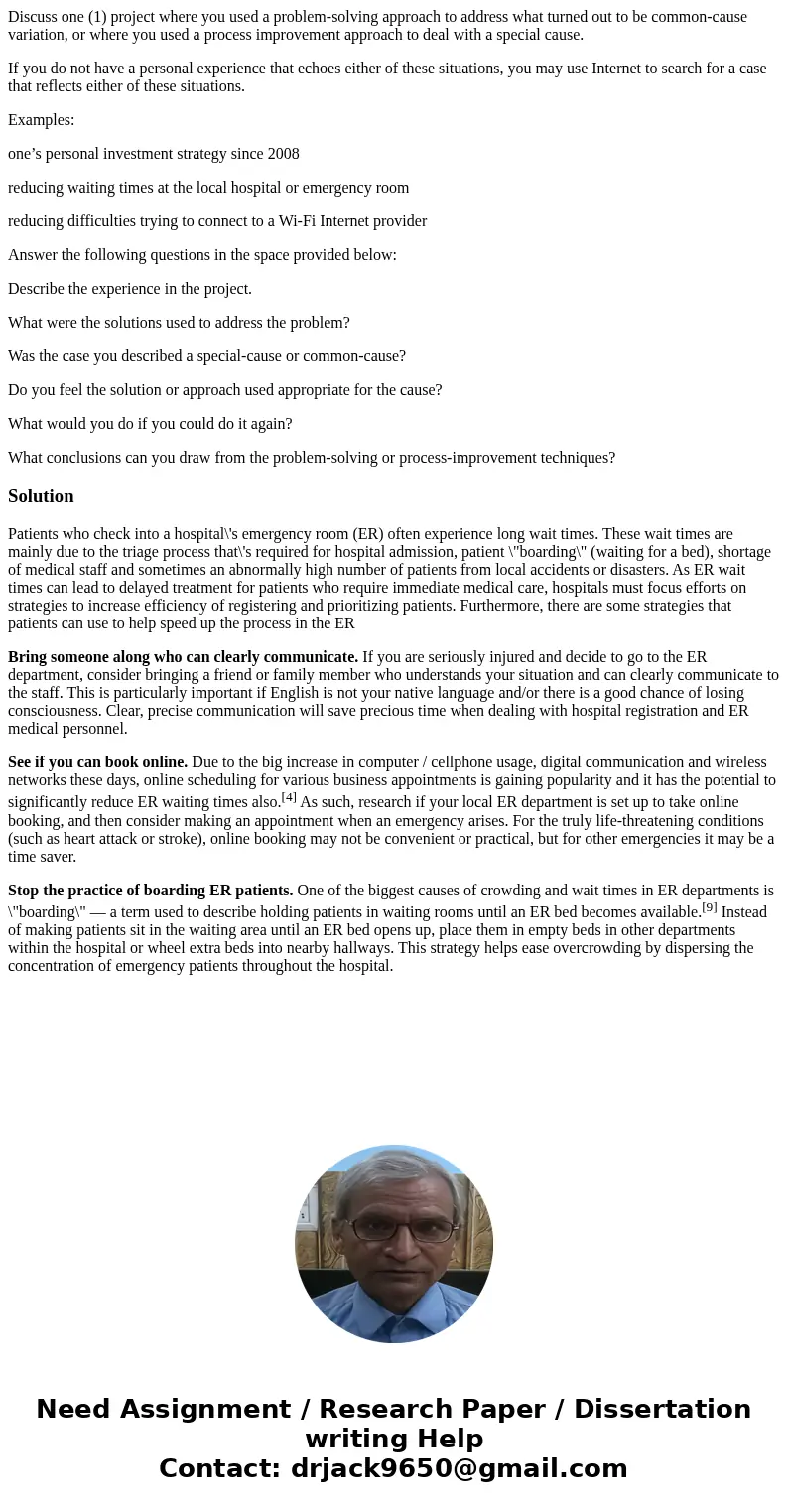Discuss one 1 project where you used a problemsolving approa
Discuss one (1) project where you used a problem-solving approach to address what turned out to be common-cause variation, or where you used a process improvement approach to deal with a special cause.
If you do not have a personal experience that echoes either of these situations, you may use Internet to search for a case that reflects either of these situations.
Examples:
one’s personal investment strategy since 2008
reducing waiting times at the local hospital or emergency room
reducing difficulties trying to connect to a Wi-Fi Internet provider
Answer the following questions in the space provided below:
Describe the experience in the project.
What were the solutions used to address the problem?
Was the case you described a special-cause or common-cause?
Do you feel the solution or approach used appropriate for the cause?
What would you do if you could do it again?
What conclusions can you draw from the problem-solving or process-improvement techniques?
Solution
Patients who check into a hospital\'s emergency room (ER) often experience long wait times. These wait times are mainly due to the triage process that\'s required for hospital admission, patient \"boarding\" (waiting for a bed), shortage of medical staff and sometimes an abnormally high number of patients from local accidents or disasters. As ER wait times can lead to delayed treatment for patients who require immediate medical care, hospitals must focus efforts on strategies to increase efficiency of registering and prioritizing patients. Furthermore, there are some strategies that patients can use to help speed up the process in the ER
Bring someone along who can clearly communicate. If you are seriously injured and decide to go to the ER department, consider bringing a friend or family member who understands your situation and can clearly communicate to the staff. This is particularly important if English is not your native language and/or there is a good chance of losing consciousness. Clear, precise communication will save precious time when dealing with hospital registration and ER medical personnel.
See if you can book online. Due to the big increase in computer / cellphone usage, digital communication and wireless networks these days, online scheduling for various business appointments is gaining popularity and it has the potential to significantly reduce ER waiting times also.[4] As such, research if your local ER department is set up to take online booking, and then consider making an appointment when an emergency arises. For the truly life-threatening conditions (such as heart attack or stroke), online booking may not be convenient or practical, but for other emergencies it may be a time saver.
Stop the practice of boarding ER patients. One of the biggest causes of crowding and wait times in ER departments is \"boarding\" — a term used to describe holding patients in waiting rooms until an ER bed becomes available.[9] Instead of making patients sit in the waiting area until an ER bed opens up, place them in empty beds in other departments within the hospital or wheel extra beds into nearby hallways. This strategy helps ease overcrowding by dispersing the concentration of emergency patients throughout the hospital.

 Homework Sourse
Homework Sourse